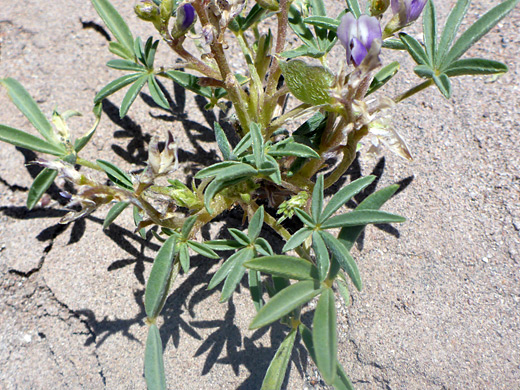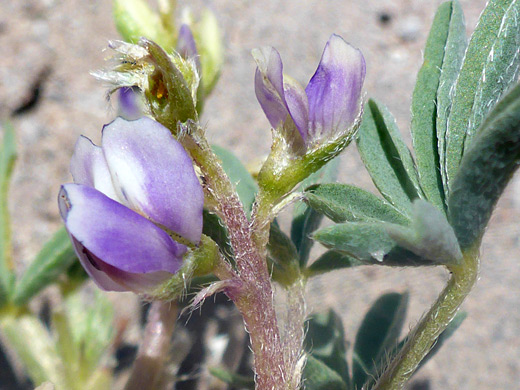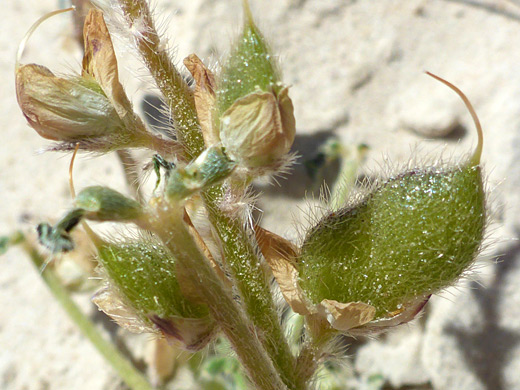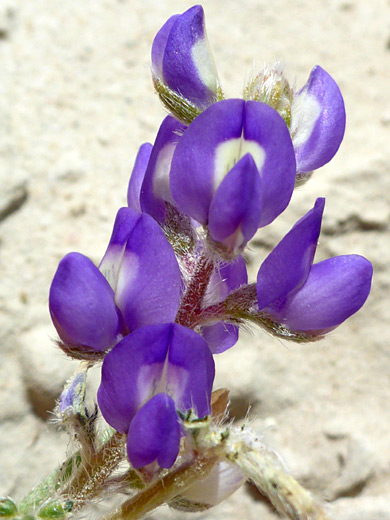Common names:
Rusty lupine, dwarf lupine, intermountain lupine
Family:
Scientific name:
Lupinus pusillus
Main flower color:
Range:
All of the western states except Texas; least common in California and Oklahoma
Height:
Between 3 and 9 inches
Habitat:
Semi-deserts, pinyon-juniper woodland; open, sandy places, up to 6,500 feet
Leaves:
Palmate, with 3 to 14 narrow, oblanceolate leaflets up to 2 inches long, glabrous above, long-hairy below
Season:
April to June
Lupinus pusillus is a small, low-growing species of sandy places in deserts and grassland, occurring in many scattered locations across much of the West, from east of the Cascades and the Sierra Nevada, across to the Great Plains. The stout, reddish stems have a covering of spreading hairs of differing lengths, as do the undersides of the greyish-green, palmate leaves, and their stalks.
Petals are mostly deep purple; the banner is yellowish-white at the center, with a few purple marks. The keel petal is also white towards the base. Calyces are sliky hairy. Flowers become paler as they wither. The inflorescence is a dense, spiralled, elongated cluster of up to 35 flowers. Seed pods are relatively short and thick, containing two or three seeds, and are visibly constricted between them. Pods are hairy, and have a curving, residual style at the tip.
Petals are mostly deep purple; the banner is yellowish-white at the center, with a few purple marks. The keel petal is also white towards the base. Calyces are sliky hairy. Flowers become paler as they wither. The inflorescence is a dense, spiralled, elongated cluster of up to 35 flowers. Seed pods are relatively short and thick, containing two or three seeds, and are visibly constricted between them. Pods are hairy, and have a curving, residual style at the tip.
All Contents © Copyright The American Southwest | Comments and Questions | Contribute | Site Map








